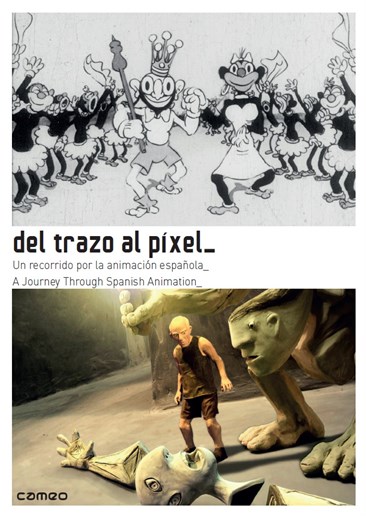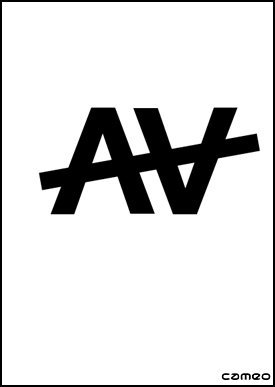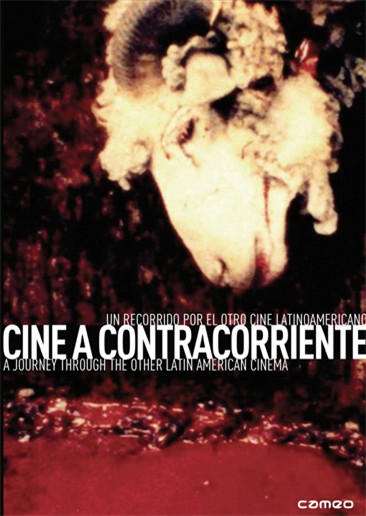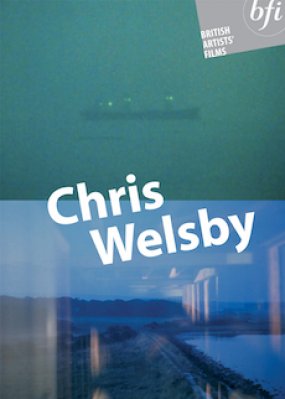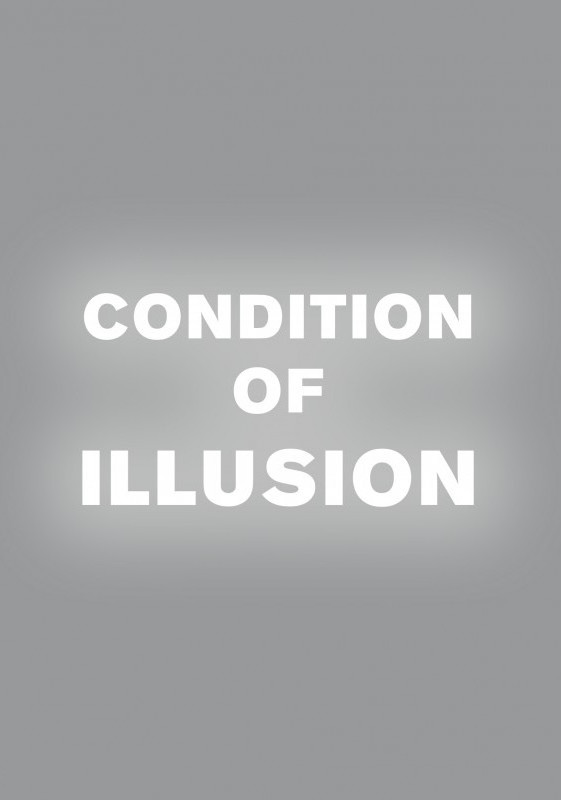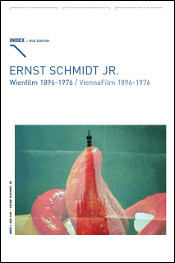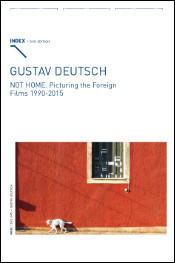GME DVD Distribution – Fall 2016 Releases
/With the fall academic season now underway, Gartenberg Media Enterprises is pleased to present a new slate of DVD and Blu-ray publications for distribution to the North American academic community. These digital editions, selected from film archives and boutique publishers worldwide, represent the entire breadth and depth of moving image history, ranging from Josef von Sternberg’s THE SALVATION HUNTERS (1924), one of the earliest independent American productions through to Austrian avant-garde filmmaker Gustav Deutsch’s NOTES AND SKETCHES 1 (2005-2015) and Swedish-American artist Gunvor Nelson’s FRAME LINE (1983-2014), and Peter Gidal's CODA I and CODA II (both 2013).
◊
GME now offers three new DVD publications from the Spanish boutique publisher, Cameo Media: FROM DOODLES TO PIXELS: A JOURNEY THROUGH SPANISH ANIMATION (DEL TRAZO AL PIXEL: UN RECORRIDO POR LA NIMACIÓN ESPAÑOLA), CINE A CONTRACORRIENTE: A JOURNEY THROUGH THE OTHER LATIN AMERICAN CINEMA, and APOLOGÍA ANTOLOGÍA: VIDEO ITINERARIES THROUGH THE SPANISH CONTEXT. Each publication is produced with booklets that further contextualize these cinema movements, and/or provide analysis and descriptions of the individual works.
FROM DOODLES TO PIXELS: A JOURNEY THROUGH SPANISH ANIMATION is an extraordinary compilation of the best of Spanish animated film. It tours a century of talent through around fifty short films, a selection of animated commercials and the first Spanish animated feature film for adults, HISTORIAS DE AMOR Y MASACRE, carefully restored for this edition.These DVDs not only reflect the diversity of techniques that make animation an art that knows no boundaries, but also offer a journey through the aesthetic evolution of a country that has lived through times of scarcity and isolation before becoming one of the richest creative talent pools in the international arena. A JOURNEY THROUGH THE OTHER LATIN AMERICAN CINEMA contains a selection of films from a traveling exhibition program, “Cinema Against the Grain.” This DVD edition presents a premiere selection of 19 avant-garde, documentary, animation, and experimental films from all throughout Latin America (including Cuba). Within the complex universe of Latin American cinema, these are fundamental works of art that are hardly known to the general public.
Divided into 5 thematic sections, each curated by a noted scholar, VIDEO ITINERARIES THROUGH THE SPANISH CONTEXT presents a retrospective view of Spanish video art through 50 years of audiovisual creation. The organizational themes include Conceptual Art, archival appropriation, political works, the body, and the video medium as an oppositional tool. This publication is a companion DVD edition to GME’s previous release of FROM ECSTASY TO RAPTURE (DEL ÉXTASIS AL ARREBATO): A Journey Through Spanish Experimental Cinema.
◊
The Swedish-American artist Gunvor Nelson figures among the most important experimental filmmakers of her generation. Her work considerably influenced the New American Cinema at the end of the 1960s, as much by its themes (women, the body, memory, dreams) as by its formal investigations (animation, collage, found footage). Complementing GME’s previous release of Gunvor Nelson’s DEPARTURES, the films and the essay contained in this new DVD publication LIGHT YEARS (from Re:Voir) reflect a half-century of evolution in this female artist's use of media and technique. From her first experimental films made in California (FOG PUMAS, 1967) to her more recent Swedish films and video (FRAME LINE, 1983-2014), material fictions joyously exalt in a fireworks of sensations. This DVD is accompanied by a 124 page book of interviews and critical articles.
◊
GME is particularly honored to present the recent DVD publication (by the Vienna Filmmuseum) of Josef Von Sternberg’s THE SALVATION HUNTERS (1925). Sternberg’s incredible feature debut was among the earliest truly independent American productions, made for a pittance outside the studio system and using San Pedro locations to remarkable effect. Sternberg spun the necessity of a low budget into a virtue: the film faithfully captures the grit of the “lower depths” milieu in its story of an impoverished young woman striving to make a better life with her naïve boyfriend, despite being surrounded by men who would exploit her. The film reveals Sternberg, under the influence of Stroheim, rejected the sentimental melodrama of D.W. Griffith in favor of an almost raw naturalism, fascinated with corruption and abasement while also exploring the poetically charged and evocatively contrasting mise-en-scene. This publication is accompanied by a fragment from Sternberg’s lost film, THE CASE OF LENA SMITH (1929), and by a video essay on THE SALVATION HUNTERS by the noted film scholar, Janet Bergstrom.
◊
Complementing our previous release of SHOOT, SHOOT, SHOOT, a DVD compilation of works by key British avant-garde filmmakers of the 1960s and 1970s, GME now offers more in-depth studies of the works of two of these artists, Chris Welsby and Peter Gidal. Offered in a specially prepared region free edition by the British Film Institute for the exclusive distribution by GME to the North American institutional market, CHRIS WELSBY: BRITISH ARTISTS’ FILMS was originally produced in partnership with Illuminations (an arts documentary producer) and Arts Council England. Chris Welsby is a landscape artist and pioneer of the moving-image installation in Britain. Featured on the DVD are works from different stages in his career, uniquely tracing his development as an artist, from his early critical responses to British structural filmmaking and Minimalism of the 1970s to his mature, contemplative landscape works of the 1980s and 1990s. Welsby’s subtle cinematic meditations have been exhibited in museums and galleries around the world.
CONDITION OF ILLUSION brings together 11 films by Peter Gidal made between 1967 to 2013. It is accompanied by a unique 40 page booklet of texts about the filmmaker’s work. An admirer of American structuralist filmmakers such as Michael Snow (RAMEAU’S NEPHEW) and Hollis Frampton, Gidal's own works are also interrogations into the formalist aspect of film, with an emphasis on grain, duration, tempo and editing structures. Gidal's films invite audiences to consider various aspects of the mediation between the real and the reel. This is accompanied by an almost willful insistence on the filmmaker as the ultimate arbiter of the construction of any work.
◊
Born in Tunisia in 1929, Marcel Hanoun came to the cinema relatively late in life, as an exile director. Visiting France as a child with his parents, he came back to Paris permanently after the end of World War II. Drawn to the films of Robert Bresson, Hanoun began to theorize a cinema in which the word and image were separated and given equal value. In this, Hanoun was working along the same lines of thought as the radical experimental filmmaker Isidore Isou, whose TRAITÉ DE BAVE ET D'ETERNITÉ proceeded along a similar path, but with a much more violent approach. Isou used scratched leader, upside down stock footage, and out-of-focus footage of himself interminably wandering the streets of Paris for his visuals, with theoretical diatribes intercut with Lettrist poetry on the soundtrack to create a world in which all is chaos. In THE SEASONS (LES SAISONS) Hanoun employs a quiet, contemplative style, using a static camera and images that force the viewer to concentrate on the most quotidian aspects of existence, to accentuate the dichotomy between sound and image which is implicit in all of cinema.
◊
GME is pleased to continue featuring releases from the INDEX DVD publishing line produced by Sixpack Films (Vienna), we now present Ernst Schmidt, Jr.’s VIENNAFILM 1896 - 1976 (WIENFILM 1896-1976) and Gustav Deutsch’s NOT HOME. PICTURING THE FOREIGN FILMS 1990-2015, works that depict both the Vienna landscape and foreign journeys. VIENNAFILM 1896-1976 constitutes the first feature length film completed by Ernst Schmidt, Jr., an important Austrian moving image artist. This work is a kind of anthology about Vienna, from the invention of film to the present day, comprising newly-staged scenes as well as incorporating documentary footage. The filmmaker himself describes the work as a collage, evoking the use of diverse footage, tape splices, and an uneven surface – instead of a tidy unity, it conveys a patchwork that remains visible as such.
GME has previously released Gustav Deutch’s signature found footage opus, FILM IST. (1-12). We now present a series of this renown artist’s lesser known works in a DVD edition entitled NOT HOME: PICTURING THE FOREIGN, which charts the development of his signature style and displays his talents as a cinematographer and archivist. The collection places several of his earliest 8mm and 16mm works alongside the 31 ‘pocket films’ shot on digital video between 2005 and 2015, offering a rare glimpse of footage that Deutsch shot himself, rather than material that he has collated and edited.
◊
In GME’s effort to expand our offerings in the vein of genre cinema, we have now released a DVD edition (published by the Belgian Cinematek) of 3 movies by the director/screenwriter team Jan Vanderheyden and Edith Keil (also husband and wife). Their first film, DE WITTE (WHITEY. 1934), was based on the popular picaresque novel by Ernest Claes, and remained the biggest success in Flemish cinema for decades. Their second film, the romantic operetta ALLEEN VOOR U (ONLY FOR YOU, 1935) is made with the same technical skills and visual flair, but was considered too exotic by film critics. The couple then changes strategy: they focused on cheaply produced, popular films set in Antwerp, full of banter, marital disputes and music. SCHIPPERSKWARTIER (THE SAILORS QUARTER, 1953) is their most important post-war success.
◊
Finally, GME offers a new DVD publication (by Flicker Alley) of CINERAMA'S RUSSIAN ADVENTURE (1966). It complements our prior Cinerama releases of THIS IS CINERAMA and WINDJAMMER. Photographed over an eight-year period by Russia’s top filmmakers, Cinerama’s Russian Adventure brings together some of the most exquisite, dramatic, and beautiful sequences from over six Soviet Kinopanorama productions (the Russian equivalent of three-panel Cinerama). The film’s locations stretch from one end of Russia to the other, from the snow-covered countryside to the majestic subways of Moscow, from the deck of a whaling ship to the front seats of the Bolshoi Theater. Bing Crosby narrates the journey, offering both a grand and intimate view of a country and culture so often cited and yet so seldom seen.


